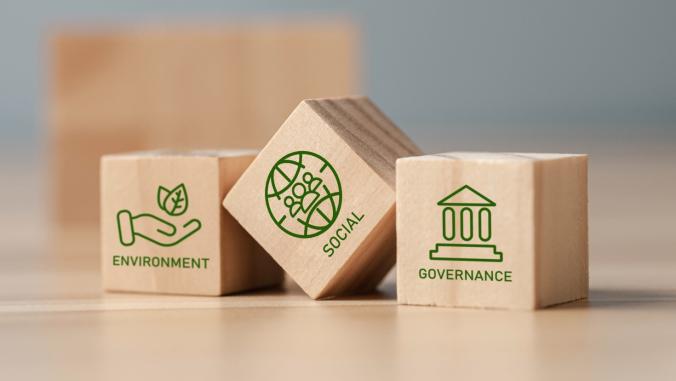Conservation impact investing is about to boom
Social investing may claim the spotlight, but $23 billion have already poured into sustainable food, timber and water projects from 2009 to 2013.

Saving the world is expensive — an estimated $300 billion is needed each year to meet the world’s environmental conservation challenges, according to the Global Canopy Program. But current levels of investment, coming primarily from governments, multilateral agencies and philanthropic sources, total only about $50 billion. With these groups strapped for cash, who will foot the rest of the bill? Many are turning to the private sector to help make up this shortfall.
Impact investing has turned on its head a long-standing worldview that the sole purpose of business and investing is to make money and solving social and environmental challenges is the domain of government and charity. Some may remain skeptical that for-profit investment can be both a morally legitimate and economically effective way to address social and environmental problems, but impact investing is moving swiftly from concept to convention.
The conservation impact investing market totaled $23 billion from 2009 to 2013 and is expected to increase to $37.1 billion over the next five years, according to a report released Thursday by The Nature Conservancy’s NatureVest division and EKO Asset Management. Conservation impact investments are intended to return principal or generate profit while driving a positive impact on natural resources and ecosystems.
In April, with support from JPMorgan Chase & Co., the Conservancy launched NatureVest, a dedicated division focused on deploying $1 billion in impact capital for conservation over the next three years by convening investors, developing and executing innovative financial transactions and building an investment pipeline across multiple sectors.
Investing in Conservation: A landscape assessment of an emerging market is the first data-driven study of the market for conservation-related investments based on direct feedback from investors. The report is based on findings from a survey of 56 investors, including five for-profit and nonprofit development finance institutions (DFIs) and 51 private investment organizations. Respondents provided information about their impact investments from 2009 to 2013, including intended conservation impact, size and type of investment, target internal rate of return and performance to date. They were also asked about the structures of their investment portfolios in the period from 2004 to 2008, and their perceptions of and long-term visions for the future market for conservation-related impact investing.
Although investments by DFIs such as the International Finance Corporation and European Investment Bank account for a majority of investments ($21.5 billion), private investments comprise $1.9 billion of the $23 billion market — an amount growing at an average of 26 percent annually, which is expected to reach more than $5.6 billion by 2018. Private investors include fund managers, corporations, foundations, non-profit organizations, family offices and representatives of high-net-worth individuals.
The approximately $23 billion committed to conservation impact investments from 2009 to 2013 was invested in three main categories:
Water quantity and quality conservation
Investments in watershed protection, water conservation and stormwater management, as well as trading in credits related to watershed management accounted for a majority of DFIs investments ($15.4 billion). Only 11 percent of private investment ($209 million) went to such projects.
Sustainable food and fiber production
Investments in sustainable agriculture, timber production, aquaculture and wild-caught fisheries made up roughly $3 billion of DFI investments. However, this accounted for a whopping two-thirds of private conservation investment ($1.2 billion).
Habitat conservation
DFIs invested close to $3 billion in the protection of shorelines to reduce coastal erosion, projects to Reduce Emissions from Deforestation and Degradation (REDD+), land easements and mitigation banking. Twenty-three percent of private investment ($43.7 million) went towards these undertakings.
Private investments set to rise, but more opportunities needed
Despite the comparatively large investment totals reported by the DFIs, most the report focuses on private investors, for which there was a significantly richer data set. Private investors expect to deploy $1.5 billion of already-raised capital over the next five years, and to raise and invest $4.1 billion more, according to the report. However, 80 percent of the nearly $2 billion already invested by private investors came from only 10 sources.
Survey respondents noted a shortage of investable projects and opportunities, indicating that they need more deals with adequate risk-return ratios and more seasoned management teams. To address the shortage of conservation impact investment opportunities, the study co-authors are working to structure conservation opportunities that can be supported by private capital.
Conservation impact investing also has suffered the shadow of the more established social investing sector — remaining under-represented and understudied. TNC hopes its new report will help impact investors understand future conservation investment opportunities and partnership opportunities across investor classes. With private investments in this space expected to more than triple over the next five years, there is plenty reason to remain optimistic.
However, a substantial amount of potential private capital has not been deployed, demonstrating the need for a significant increase in the number of risk adjusted investment opportunities.
“What the report tells us is that this is not a money problem, “ said Ricardo Bayon, EKO Asset Management partner and co-author of the report.
“The money is out there. It is about courage, ingenuity and creativity. It is about coming up with appropriate financeable deals. If we’re successful, it will mean that billions of new dollars will flow into efforts to improve sustainable food supplies, protect habitats and achieve water conservation around the world.”





